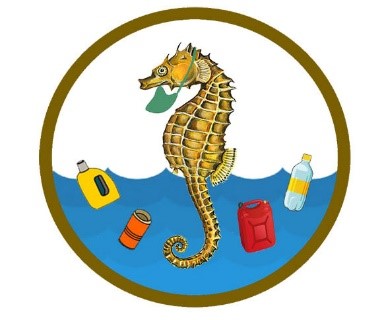News
“Gradienti ambientali in habitat marini costieri”
Palinuro (Salerno), 26 maggio-1 giugno 2019
Maria Ina Arnone
BEOM Department
Stazione Zoologica Anton Dohrn
Conference Room
Monday, March 11, 2019 - h12.00
Paul Fremont
Integrative Marine Ecology Department
Stazione Zoologica Anton Dohrn
Conference Room
Wednesday, February 27, 2019 - h12.00

The first International Summer School on Marine ecotoxicology, (SSME1), is organized by the Stazione Zoologica Anton Dohrn under the patronage of Ordine Nazionale dei Biologi and will take place form 1st to 5th July 2019.
Organizers: Elisabetta Tosti and Alessandra Gallo
Faculty:
Raffaele Boni, University of Basilicata, Potenza, Italy
Maria Cristina Buia, Stazione Zoologica Anton Dohrn, Naples, Italy
Isabella Buttino, ISPRA, Livorno, Italy
Ylenia Carotenuto, Stazione Zoologica Anton Dohrn, Naples, Italy
Ilaria Corsi, University of Siena, Siena, Italy
Maria Consiglia Esposito, Stazione Zoologica Anton Dohrn, Naples, Italy
Alessandra Gallo, Stazione Zoologica Anton Dohrn, Naples, Italy
Marco Guida, University of Naples Federico II, Naples, Italy
Sandra Hochscheid, Stazione Zoologica Anton Dohrn, Naples, Italy
Adrianna Ianora, Stazione Zoologica Anton Dohrn, Naples, Italy
Giovanni Libralato, University of Naples Federico II, Naples, Italy
Marco Munari, Stazione Zoologica Anton Dohrn, Naples, Italy
Luigi Musco, Stazione Zoologica Anton Dohrn, Naples, Italy
Marco Signore, Stazione Zoologica Anton Dohrn, Naples, Italy
Elisabetta Tosti, Stazione Zoologica Anton Dohrn, Naples, Italy
Theme:
SSME1 will provide an advanced training on different classes of traditional and emerging marine pollutants and how biological systems respond to and are affected by these contaminants at all biological levels.
The program consists of lectures and practical sessions held by internationally recognized experts and researchers in the field.
This course will allow the participants to acquire methods and approaches for the detection and assessment of the impact of environmental stressors on marine biota.
The participants will focus on:
Marine chemical stressors: metals, antifoulants, nanomaterials, plastics
Climate changes: global warming, ocean acidification
Marine natural toxins
Marine model organisms in ecotoxicology
Biomarkers and bioindicators in marine environmental monitoring
Reprotoxicology
Case studies
Ecotoxicity tests
Practical sessions will include innovative and standardized toxicity tests for the assessment of ecotoxicological effects in different marine organisms.
SSME1 is open to 20 people with basic knowledge in ecotoxicology
Funding: Ordine Nazionale Biology, Zeiss, Ecotox, GVS filter technology, Aurogene, Deltek
The Ordine Nazionale dei Biologi (ONB) supports SSME1 with funds to cover the fee for thirteen participants and provides a certificate worth ECM credits (continued medical education) to all participants.
Contacts: This email address is being protected from spambots. You need JavaScript enabled to view it.; This email address is being protected from spambots. You need JavaScript enabled to view it.; This email address is being protected from spambots. You need JavaScript enabled to view it.
Deadline for applications: 15 April 2019
Information and online applications on : https://ssme1.szn.it/
24 – 26 July 2019
Stazione Zoologica Anton Dohrn Naples, Italy
The school is designed for PhD students and early-career researchers aiming at acquiring an interdisciplinary understanding of concepts and methods for the investigations of protein structure, function, and evolution, with insights into environmental adaptations and their potential biotechnological applications.
The course program integrates theoretical lectures with hands-on practical tutorials on molecular evolution, sequence data manipulation and alignment, protein structure, molecular modelling, docking analysis, and molecular evolution. Participants are particularly encouraged to work on their own laptop.
Admission to the course is based on ‘first come, first served’ basis and the number of participants is limited to 22.
Early registration special fee. 
Per prenotare una visita al Centro Ricerche Tartarughe Marine di Portici clicca qui
Per maggiorin informazioni visita il sito della Fondazione Dohrn
Valerio Mazzella
Biology and Evolution of Marine Organisms Department
Stazione Zoologica Anton Dohrn
Conference Room
Wednesday, February 20, 2019 - h12.00
Per onorare la memoria di Paolo Brancaccio, studente d’ingegneria la cui vita è stata tragicamente rapita alla soglia della laurea, il Lions Club Napoli Megaride e la Stazione Zoologica Anton Dohrn bandiscono una borsa di studio di 8.000,00 euro (ottomila euro) riservata a giovani laureati con laurea specialistica/magistrale in: Ingegneria, Fisica, Chimica, Scienze Geologiche, Scienze Biologiche, Scienze Naturali, Scienze Biotecnologiche, Scienze dell’Ambiente Marino, Farmacia, Medicina e Chirurgia, Medicina Veterinaria o discipline equivalenti, che vogliano condurre ricerche nel campo delle scienze del mare e della Mission della Stazione Zoologica Anton Dohrn mediante un soggiorno di almeno 3 mesi presso un Istituto di ricerca o un laboratorio straniero d'alta qualificazione.
Per maggiori informazioni scarica il BANDO
L'utilizzo della cinematografia nelle scienze
Martedì 12 febbraio 2019, ore 16.30
Moderano: Anna Masecchia, Marcello Seregni
Intervengono: Lorenzo Lorusso, Virgilio Tosi, Monica Zoppè
Verrà presentato AA.VV., Osvaldo Polimanti e le origini della cinematografia scientifica, Carocci, Roma 2011
a cura di Lorenzo Lorusso, Virgilio Tosi, Giovanni Almadori










